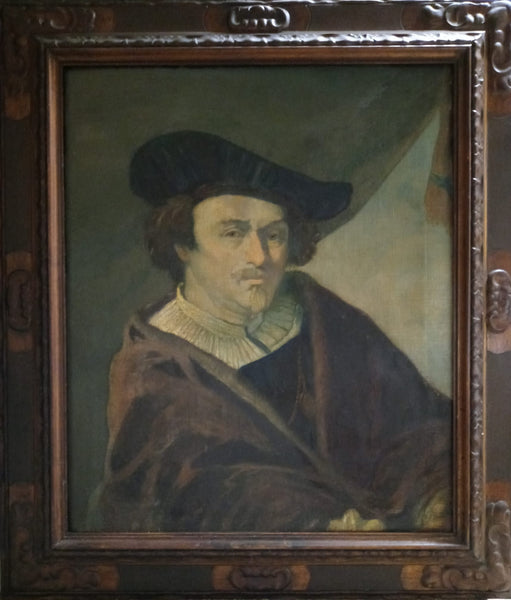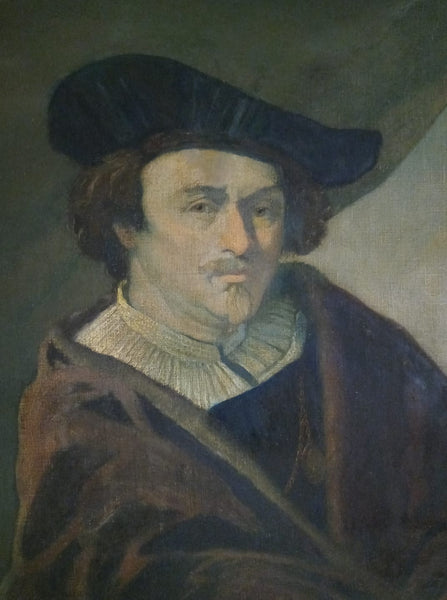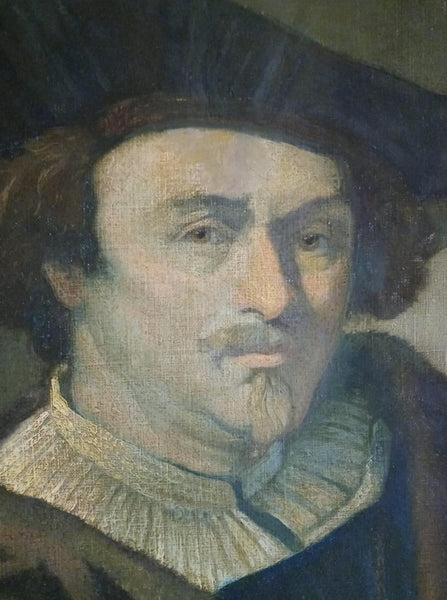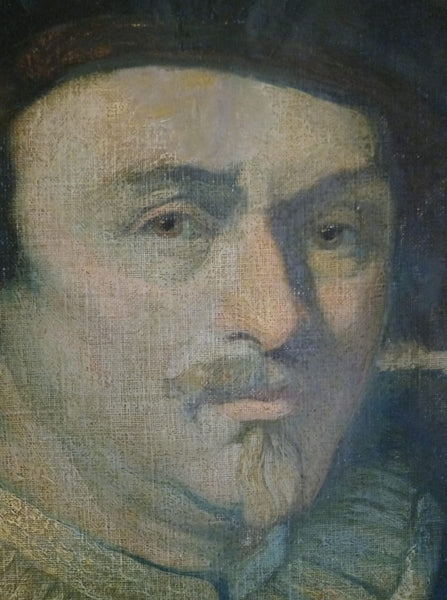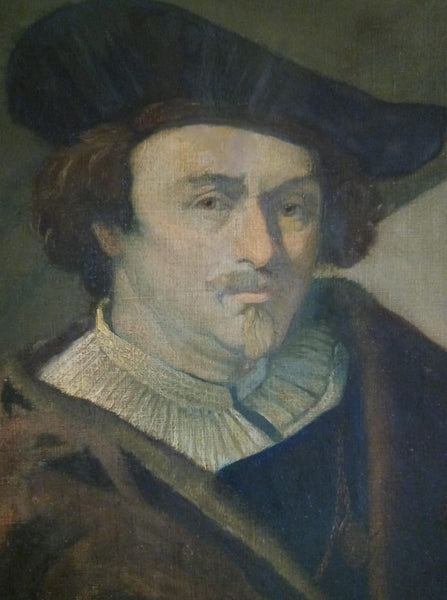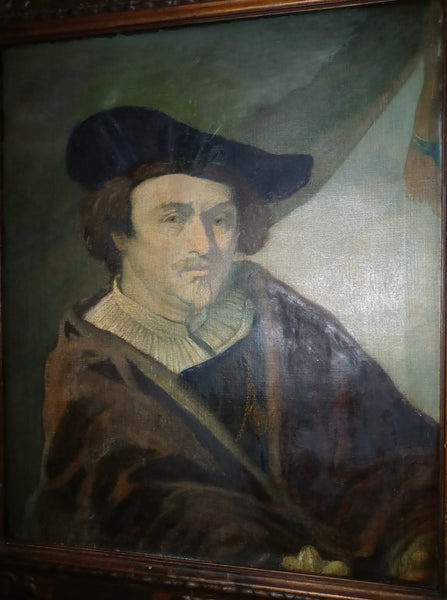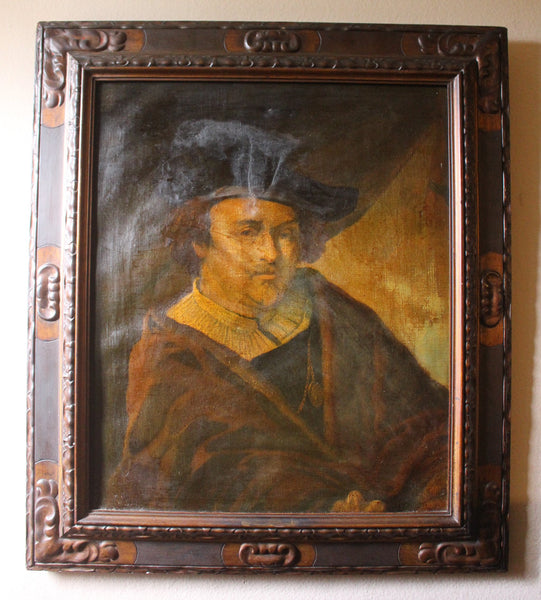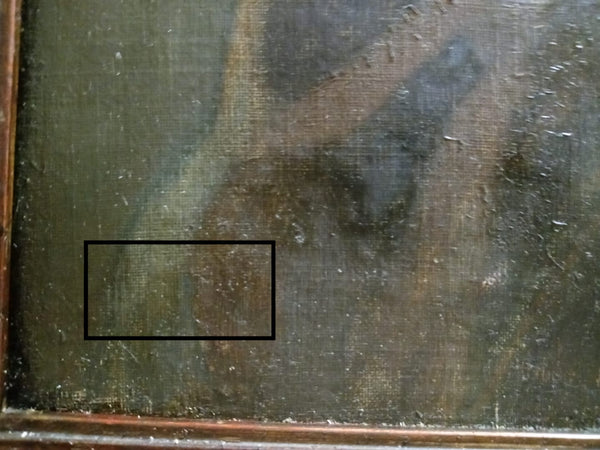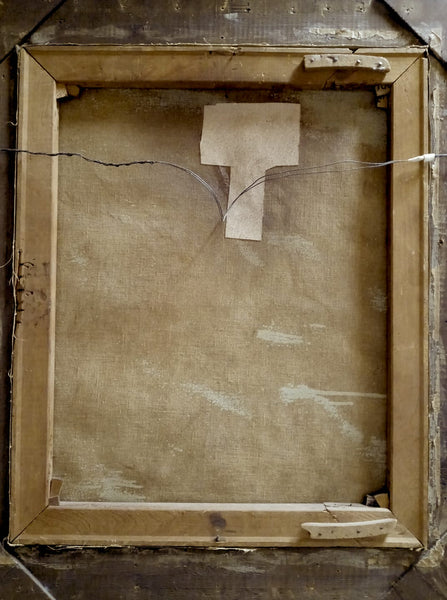Frans Hals Original Antique 17thC Dutch Golden Age Baroque Realism Oil Painting Portrait of a Gentleman
Frans Hals The Elder, (1582-1666), original antique 17th-century Dutch Golden Age portrait oil on canvas painting of a gentleman merchant. The painting's measurements are approximately 20" X 24.8", plus the antique wood-carved frame. This painting has had some previous restorations and newer restorations. The older restorations include repairing a tear along the top of the gentleman's hat, and above to about 6 inches. At that time, (approximately 100 years ago), the painting was also relined with canvas, verso. Newer restorations have smoothed out this tear and removed quite a bit of older varnish; (the last image is of the painting before the most recent restorations and cleaning of darkened varnish). (The painting was unrecognizable before the latest stage of restoration). The painting is signed in the lower left of the painting. There are still a few minor areas where the paint is degraded, and there is a minor loss of paint in isolated areas. The main area of the image- the portrait, (and the face), has had little to no restorations of overpaint, (however, it has been cleaned of older, darkened varnish). The painting has yet to be re-varnished. Please review all images.
Frans Hals the Elder, a Dutch Golden Age painter, was renowned for his individual and group portraits and genre works. He resided and worked in Haarlem, playing a significant role in developing 17th-century group portraiture. Hals was known for his expressive and loose brushwork.
In 1610, Hals joined the Haarlem Guild of Saint Luke and began earning money as an art restorer for the town council. He worked on restoring the notable works of artists like Geertgen tot Sint Jans, Jan van Scorel, and Jan Mostaert, which were displayed in the St John's Church in Haarlem. Hals started his career in portraiture due to the decline in demand for religious themes in the art market.
Unlike other contemporary painters who relocated based on patronage, Hals remained in Haarlem and required his customers to visit him. He insisted that his sitters be from Haarlem or visiting the city when their portraits were made.
Hals died in Haarlem in 1666 and was buried in the Grote Kerk church.
Hals favored natural light and silvery tones, in contrast to Rembrandt's use of golden glow effects and dramatic lighting. He had a keen eye for capturing a moment in his subjects' lives, reproducing it with precision in color and expression.
As Hals received fewer commissions from wealthy clients in his later years, he began using a more limited color palette, with black dominating his compositions. This shift can be attributed to the conservative dress of his Protestant sitters rather than personal preference.
According to the Frans Hals catalog raisonné, there are 222 known paintings attributed to Hals. However, another authority on Hals, Claus Grimm, published a shorter œuvre of 145 paintings in his work "Frans Hals. Das Gesamtwerk" (1989). Hals' specialization in portraiture is evident as there is little evidence of his engagement with landscape, still life, or narrative genres.
Hals's art became highly influential, particularly in later generations of painters. The technique he employed, with visible brushstrokes and a lively, vibrant style, captivated artists such as Édouard Manet, Claude Monet, and James Abbott McNeill Whistler. His loose and bold approach to portraiture, emphasizing overall impression rather than fine details, inspired the realists and impressionists of the 19th century. Vincent van Gogh, in particular, expressed admiration for Hals's ability to capture the vitality of his subjects with dynamic brushwork.
Despite experiencing a period of obscurity and undervaluation after his death, Hals gradually regained recognition and appreciation. His influence continued to be felt long after his time, with artists like Lovis Corinth acknowledging him as a significant source of inspiration. Today, his paintings are regarded as masterpieces, treasured possessions of public galleries worldwide. Hals's unique style and ability to breathe life into his subjects have secured his place as one of the most celebrated portrait painters in art history.
In conclusion, Frans Hals's legacy extends beyond his lifetime. His impact on the art world, from his contemporaries to modern-day painters, is a testament to his extraordinary talent and innovative approach to portraiture. His dynamic brushwork, vibrant color palette, and ability to capture the essence of his subjects continue to captivate viewers and inspire artists across generations.
Contact Us:
pacificfineart@gmail.com
424-259-3290









